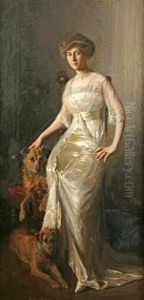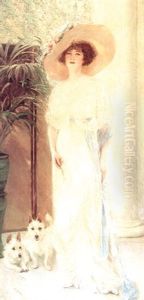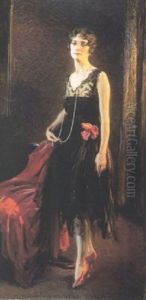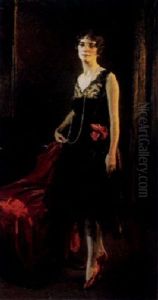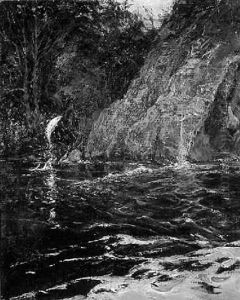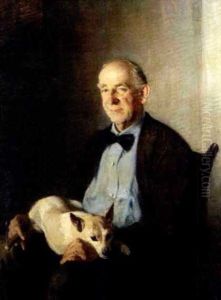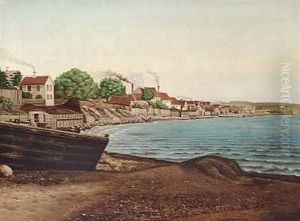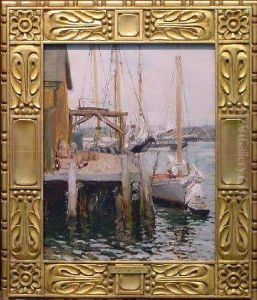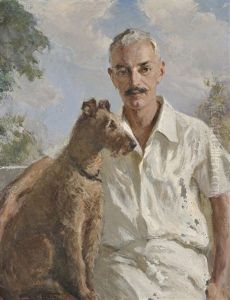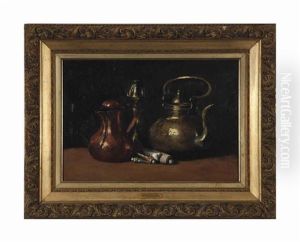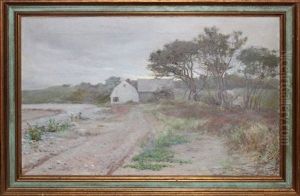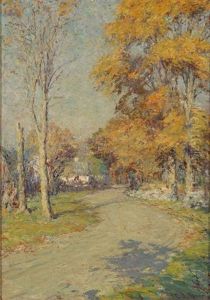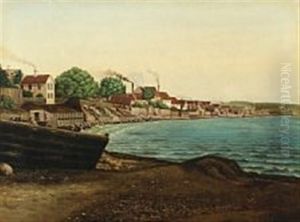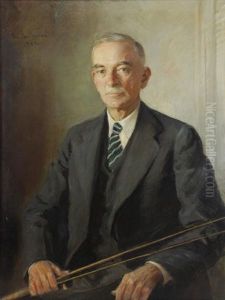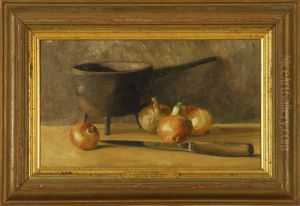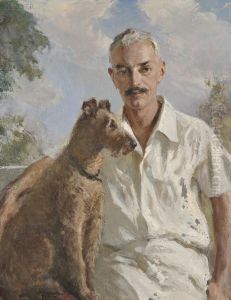Ernest Ludwig Ipsen Paintings
Ernest Ludwig Ipsen was born on December 19, 1869, in Copenhagen, Denmark. During his early life, he manifested a strong interest in art and subsequently pursued his passion through formal education. Ipsen's journey as an artist began in earnest when he left Denmark to study art in the United States. He settled in Boston, Massachusetts, where he established himself as a portraitist and became a notable figure in the local art community.
Ipsen honed his skills and developed his distinctive style at the Museum School in Boston, also known as the School of the Museum of Fine Arts. His talent and dedication to his craft were evident, and he quickly gained recognition for his work. Ipsen's portraits were characterized by their realism and attention to detail, and he was particularly adept at capturing the personality and essence of his subjects, which ranged from prominent individuals to his own family members.
Throughout his career, Ernest Ipsen was active in the artistic circles of Boston and beyond. He participated in numerous exhibitions and was a member of various art organizations. His works were displayed in prestigious venues, including the Pennsylvania Academy of the Fine Arts and the Art Institute of Chicago. Ipsen was also a member of the Copley Society of Art in Boston, reflecting his status as an esteemed artist in the region.
Despite his success, Ipsen remained dedicated to his practice, continually refining his technique and exploring the nuances of portraiture. He was a respected teacher, sharing his knowledge and experience with the next generation of artists. Ipsen's influence extended beyond his own work, as he played a role in shaping the artistic landscape of his time.
Ernest Ludwig Ipsen passed away on December 15, 1951, in Boston. His legacy is preserved through the portraits that continue to be admired for their craftsmanship and insight into the human character. His contributions to the art world have been acknowledged posthumously, and his works are held in several collections, ensuring that his artistic achievements continue to be celebrated and studied by art enthusiasts and historians alike.
